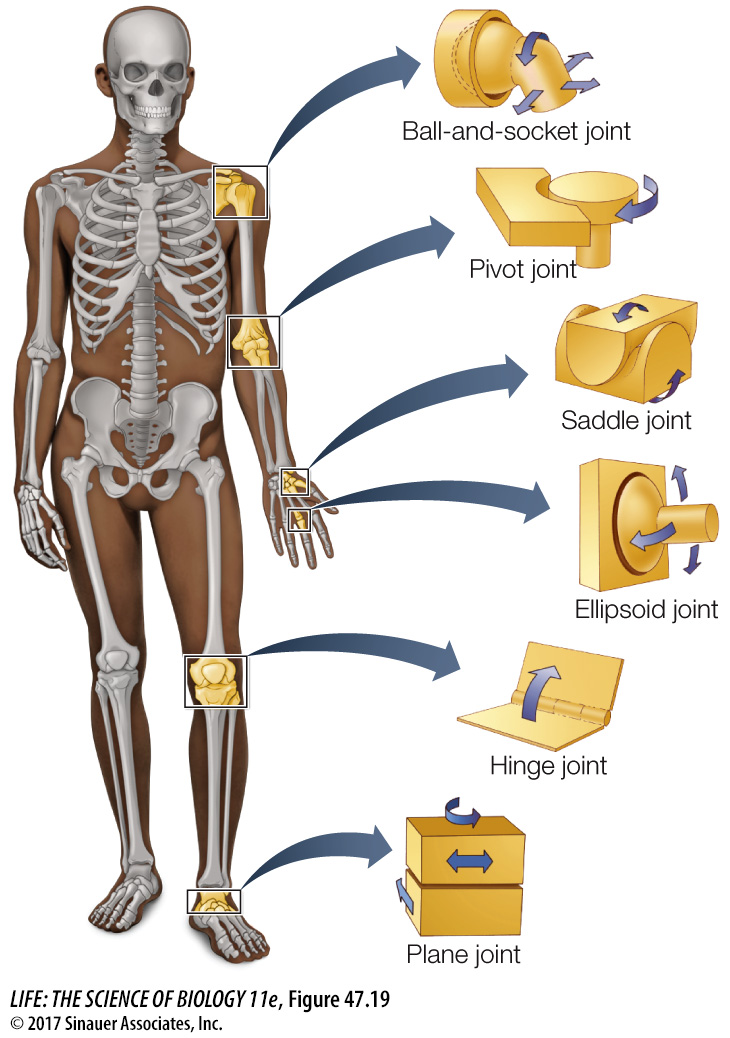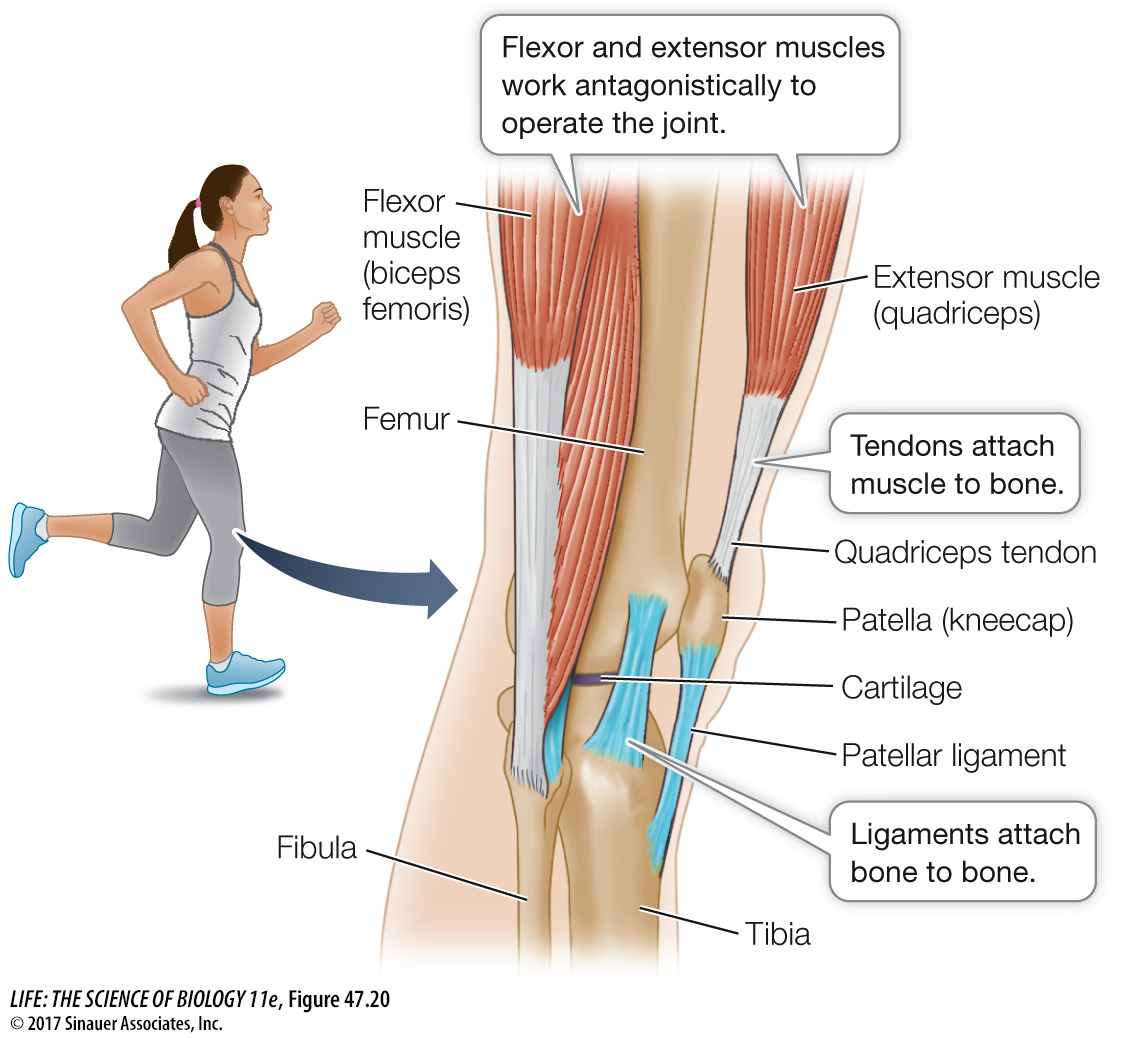Bones that have a common joint can work as a lever
Muscles and bones work together around joints, where two or more bones come together. Different kinds of joints allow motion in different directions (Figure 47.19), but muscles can exert force in only one direction. Therefore muscles create movement around joints by working in antagonistic pairs: when one muscle contracts, the other relaxes. When both contract, the joint becomes rigid (which is important for maintaining posture, for example).

Activity 47.3 Joints
With respect to a particular joint, such as the knee, we refer to the muscle that bends, or flexes, the joint as the flexor, and the muscle that straightens, or extends, the joint as the extensor. The bones that meet at the joint are held together by ligaments, which are flexible bands of connective tissue. Other straps of connective tissue, called tendons, attach the muscles to the bones. In Figure 47.20, which shows the knee joint, you can see a tendon that connects a flexor muscle in the upper leg (biceps femoris) to a bone in the lower leg. You can also see a tendon connecting the extensor muscle (quadriceps) to the kneecap (patella) and the patellar ligament that connects the patella to the lower leg bone. It is the patellar ligament that is tapped when testing the knee-

Bones constitute a system of levers that are moved around joints by the muscles. Levers have three parts: load arm, force arm, and fulcrum. The joint is the fulcrum, and the length of the force arm relative to the load arm depends on where the muscle attaches to the bone. Three classes of levers are defined based on the location of the fulcrum (Figure 47.21). In a class 1 lever, the fulcrum is between the load and force arms, as in a see-

Q: What class of lever is the knee joint?
The knee joint is a class 3 lever.